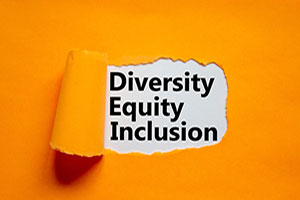Uncovering Workplace Barriers by Auditing the DEI Experience
 Detecting bias can be a challenge, particularly when it comes to long-standing practices that are firmly rooted in our campus culture and systems. Left unchecked, these routine practices may create unintended barriers to inclusion and belonging.
Detecting bias can be a challenge, particularly when it comes to long-standing practices that are firmly rooted in our campus culture and systems. Left unchecked, these routine practices may create unintended barriers to inclusion and belonging.
In the recent CUPA-HR virtual workshop, “Detecting Systemic Bias in Talent Practices,” Dr. Aarti Shyamsunder, DEI solutions consultant at YSC Consulting, and Pooja Shahani, founder and CEO of Kintsugi Consulting, discussed methods higher ed HR practitioners can use to pinpoint these barriers to inclusion. One method is to audit the DEI experience at your institution by reflecting on the following questions to determine who is present, who is participating and who holds the power.
- Who runs things? Who are the individuals that make decisions? Who are the leaders? Who sits on the board? Do they all look the same? Is there a pattern in who gets to run things?
- Who does the office “housework?” Who organizes team outings and takes meeting notes? Are these individuals recognized for their work? Women in the workforce often take on these additional duties.
- Who gets credit? Are team members receiving praise and recognition for their contributions to a job well done? In academia, this could include whose name gets listed first on research or other academic work.
- Who knows whom? Is there a pattern of individuals who know each other who receive more information and therefore have more opportunities to progress?
- Who is speaking? Who gets to take space in a room? Is there an obvious difference in how often men in the room speak versus women?
- Who gets development opportunities? Who are the individuals who get access to high-visibility roles that end up becoming senior-level positions? Who is being invested in?
- Whose experience matters? “Covering” is a term that means downplaying our identities. What kind of covering demands (often unspoken) do we make of people so they feel compelled to change themselves in order to belong?
- Who gets invalidated? Whose presence and voice are missing from meetings?
Exploring long-standing practices through the lenses of various campus stakeholders is essential to creating a higher ed workplace that is both inclusive and welcoming. Look for ways you and your team can audit employee experiences and uncover barriers at your institution.
Related resources:
Diversity, Equity and Inclusion Toolkit (CUPA-HR members-only resource)
Diversity and Inclusion Start With the Hiring Process: Two Institutions Getting It Right (The Higher Ed Workplace Blog)


